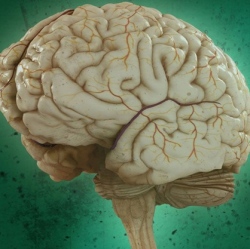
A computer algorithm called a “classifier” can distinguish between adults with and without autism by studying brain scans. The software found 16 key connections that allowed it to tell, with high accuracy, who had been traditionally diagnosed with autism and who had not. The team developed the classifier with 181 adult volunteers.
“It is the first study to [successfully] apply a classifier to a totally different cohort,” says Yuka Sasaki, a research associate professor of cognitive, linguistic, and psychological sciences at Brown University and co-corresponding author of the paper in Nature Communications. “There have been numerous attempts before. We finally overcame the problem.”
The classifier, which blends two machine-learning algorithms, worked well in each population, averaging 85 percent accuracy among the Japanese volunteers and 75 percent accuracy among the Americans. The researchers calculated that the probability of seeing this degree of cross-population performance purely by chance was 1.4 in a million.
“These results indicate that although we developed a highly reliable classifier using the training data only in Japan, it is sufficiently universal to classify [autism] in the US validation cohort,” wrote the team of clinicians and basic researchers led by Mitsuo Kawato of the Advanced Telecommunications Research Institute International in Kyoto, Japan.
In another way of validating the classifier, the researchers asked whether the differences it notes in the 16 connections were predictive not only of whether a person had an autism diagnosis at all, but whether they relate to performance on the main diagnostic method currently available to clinicians, the Autism Diagnostic Observation Schedule.
ADOS is based not on markers of biology or physiology, but instead on a doctor’s interviews and observations of behavior. The classifier was able to predict scores on the ADOS communications component with a statistically significant correlation of 0.44.
The correlation suggests the 16 connections identified by the classifier relate to attributes of importance in ADOS. When the researchers examined where these 16 connections are and what brain networks they affect, they found that 41 percent of the specific brain regions in which the 16 connections reside belonged within the cingulo-opercular network, which matters to brain functions such as conceiving of other people, face processing, and emotional processing.
Finally, the team looked to see whether the classifier appropriately reflects the similarities and differences between autism spectrum disorders and other psychiatric conditions. Autism, for example, is known to share some similarities with schizophrenia but not with depression or attention deficit hyperactivity disorder, as indicated by a previous genome study.
Applied to patients with each of these other disorders compared to similar people without the conditions, the classifier showed moderate but statistically significant accuracy in distinguishing schizophrenia patients, but not depression or ADHD patients.
The MRI scans required to gather the data were simple, Sasaki says. Subjects only needed to spend about 10 minutes in the machine and didn’t have to perform any special tasks. They just had to stay still and rest.
Despite that simplicity and even though the classifier performed unprecedentedly well as a matter of research, Sasaki says, it is not yet ready to be a clinical tool. While the future may bring that development, refinements will be necessary first.
“The accuracy level needs to be much higher,” Sasaki adds. “Eighty percent accuracy may not be useful in the real world.”
